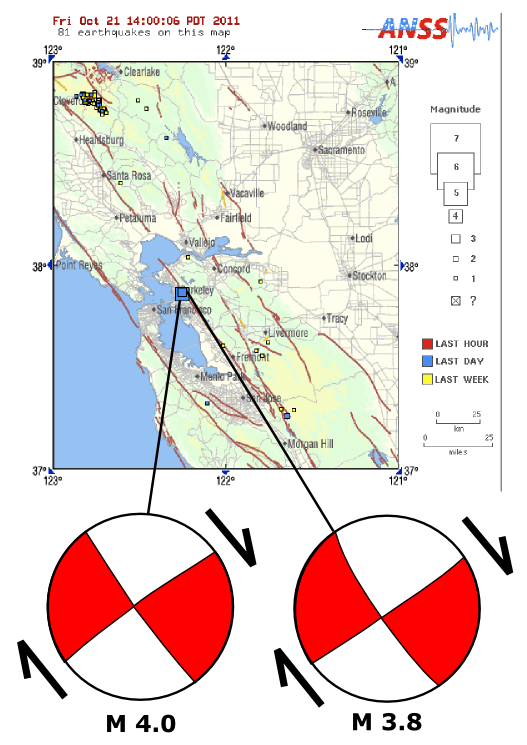![]() Yesterday, several million Californians participated in the 2011 Great California ShakeOut – a simulated earthquake drill, held close to the anniversary of the 1989 Loma Preita earthquake, that aims not only to raise awareness of the ever-present risk of a large earthquake occurring in California, but also to make sure that when it does happen, people know what to do.
Yesterday, several million Californians participated in the 2011 Great California ShakeOut – a simulated earthquake drill, held close to the anniversary of the 1989 Loma Preita earthquake, that aims not only to raise awareness of the ever-present risk of a large earthquake occurring in California, but also to make sure that when it does happen, people know what to do.
The drill occurred at 10:20 am yesterday morning, but for the residents of San Francisco, the Earth itself also decided to provide a pointed reminder that they lived in a seismically active area. About four hours later the Bay area was shaken by a shallow magnitude 4.0 tremor centred near Berkeley, and a magnitude 3.8 just a little to the north a few hours after that. They were located pretty much on top of the trace of the Hayward Fault, and this structure’s culpability is confirmed by the strike-slip focal mechanisms of both of these earthquakes. The Hayward Fault runs parallel to the main San Andreas Fault, and like its neighbour helps to accommodate the northwest motion of the Pacific plate relative to the North American plate. As you can see, both focal mechanisms can be explained by motion along a southeast-northwest oriented fault plate, with the western side moving northwest.

Focal mechanisms for the two moderate quakes beneath Berkeley on ShakeOut Day. Map source: USGS.
As far as I’m aware, activity of this magnitude is not unusual in this region. You get earthquakes of this size in Northern California every month or so; in a quick search of the regional earthquake catalogue I found about a dozen (Update: see Eric Fielding’s comment below for more locally specific information) . However, none of the others happened to coincide with a major earthquake drill, which probably makes these two feel more significant to our pattern-junkie brains. Just for once, this effect could be considered beneficial, providing a useful reinforcement of the ShakeOut message of ‘Drop, Cover, Hold On!‘



Comments (4)